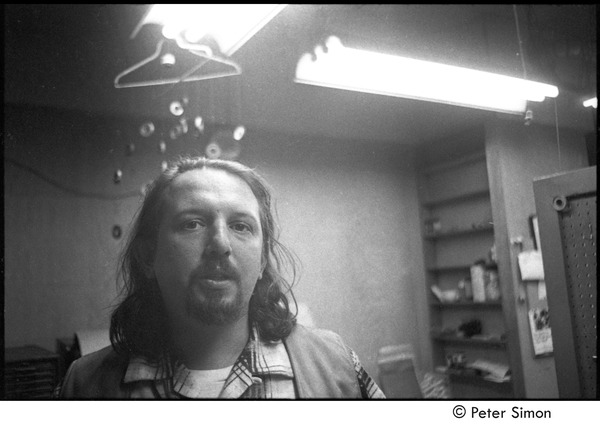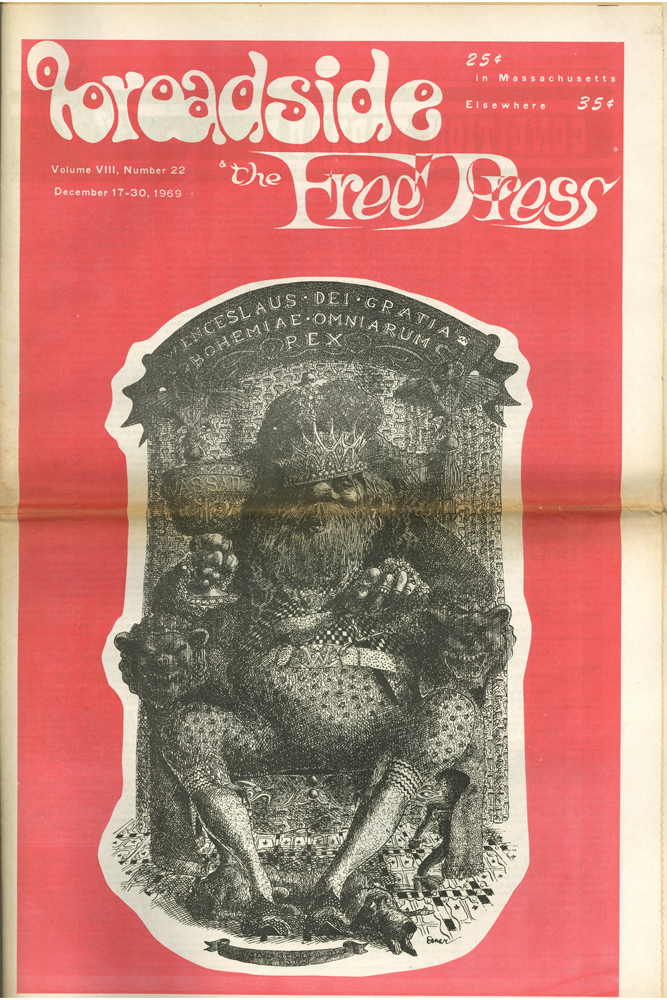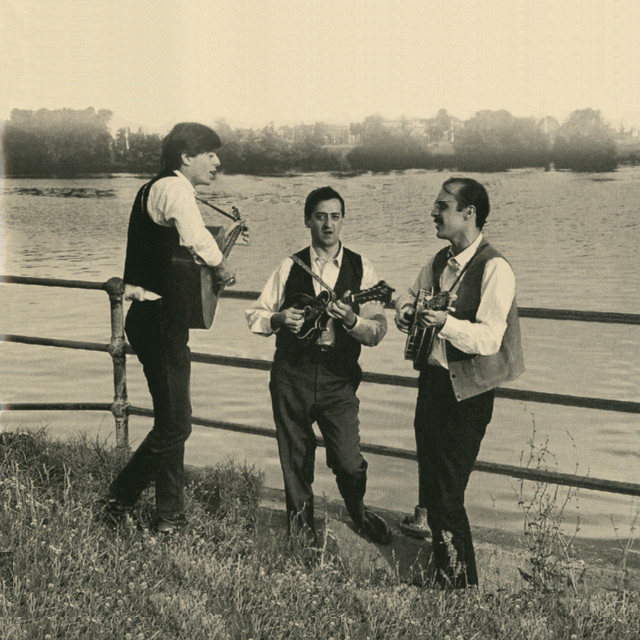The Broadside

As soon as the inaugural issue of The Broadside hit the streets on March 23, 1962, it reached required-reading status among folk-music performers, venue owners and fans in Boston/Cambridge and eventually all across New England. And that remained the case until its final issue in February 1969.
Expanding from the four mimeographed pages at first to as many as 16 pages on newsprint at its peak, the free bi-weekly was a treasure trove of information on the burgeoning scene and was the region’s go-to source as the folk revival rose to its mid-‘60s peak. The Broadside’s official circulation was around 5,000 copies, but its actual reach was much broader due to friends and folk-music aficionados sharing a single copy.
Founding
The Broadside was the brainchild of former MIT student turned Air-Force reservist David Wilson, who’d watched the folk scene explode in Boston and Cambridge in the mid-1950s, at first driven by the hootenannies held at the YMCA and local hotels, then by the growing number of live-music venues on the ubiquitous campuses of the area’s colleges and universities. With the number of New England-based folk performers, venues and fans expanding dramatically in the early ‘60s, Wilson saw the need for a reliable and creative publication that would appeal equally to artists, venue owners and music lovers.
Schedules, Reviews, Profiles, Columns
Launched almost simultaneously – but entirely coincidentally – with other folk-centric publications called Broadside in New York City and Los Angeles, The Broadside included performance schedules for coffeehouses in Boston and Cambridge such as Club 47, Café Yana and the Unicorn Coffee House, but also for venues far outside those cities like The Carousel in Hyannis, The Loft in West Yarmouth, The Mooncusser Speakeasy on Martha’s Vineyard and The Silver Vanity in Worcester.
It ran features on folk-music events across New England – the Newport Folk Festival, the New England Folk Festival, Folklore Weekend at Sturbridge Village, Pinewood Camp Folk Music Week, the Brandeis Folk Festival and the Folk Music and Guitar Festival, among others – as well as articles about the Folk Song Society of Greater Boston, AM station WEEI, FM stations WBZ and WTBS and television station WCVB.
In addition to concert and festival information, The Broadside included news on artists’ upcoming radio and TV appearances, announcements and reviews of their latest albums, features on and profiles of artists and venues and regular columns by Wilson (“Ramblin’ Round”), Casey Anderson (“Folk Scenes New York”), Ed Freeman (“Notes from a Variant Stanza Collector”), Peter Stampfel (“Holy Modal Blither”), Robert J. Lurtsema (“On the Scene”) and Jan Chartier (“Coffeehouse Theatre”).
“Spotlighting” section, Final issue
One of the most popular sections in the early days of The Broadside was “Spotlighting,” which featured interviews with locally and nationally known folk artists and bands. Among those who spoke at length with the magazine’s editorial team – which at one time included Dick Waterman (as features editor) – were Woody Guthrie, Pete Seeger, Bob Dylan, Joan Baez, Tom Rush, Eric von Schmidt, Sylvia Mars, Greg Hildebrand, The Charles River Valley Boys, Guitar Nubbit, David Greenberg and The Boston Bluegrass Group.
The final issue of The Broadside was dated February 12-23, 1969, after which it merged with Free Press Boston and became Broadside & the Free Press. Distributed as an insert in newspapers across New England, that publication focused on social and political issues, not music, and its final issue was in September 1970.
(by D.S. Monahan)
























